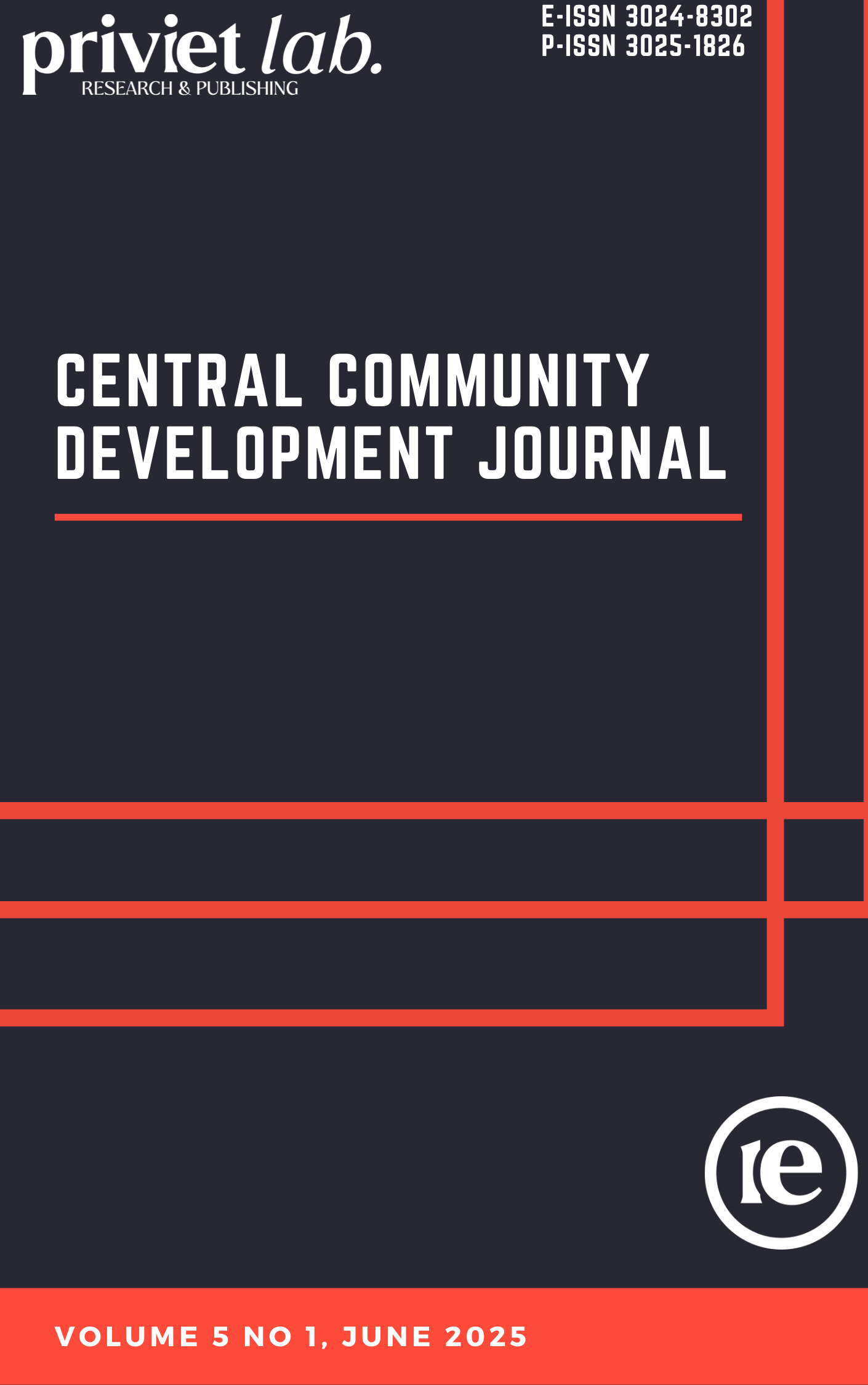Post-eruption economic recovery: Strengthening livelihoods in Lumajang Indonesia after Mount Semeru disaster
DOI:
https://doi.org/10.55942/ccdj.v5i1.351Keywords:
Post-disaster recovery, Economic assistance, Livestock groups, Community resilience, Disaster risk reductionAbstract
Natural disasters in Indonesia result in significant material and nonmaterial losses. According to the National Disaster Management Agency (BNPB), disasters in 2021 have caused 709 deaths, 73 missing persons, and displaced 583,840 people. Post-disaster recovery efforts, including economic assistance, are essential for restoring people’s livelihoods. The implementation of economic assistance after the Mount Semeru eruption in the Lumajang Regency included several stages: preparation, socialization and location survey, group formation, technical guidance, provision of stimulant assistance, exit strategy planning, and monitoring and evaluation. As a result, two livestock groups were established in the Bumi Semeru Damai permanent housing area, each consisting of 10 members and legally recognized by a village decree. These groups successfully carried out daily livestock management, enhanced productivity and welfare, improved market access, and increased the understanding of livestock product marketing. The initiative fostered sustainability and independence, with the groups evolving into leading livestock centers specializing in goats in the Lumajang Regency. Critical factors supporting sustainability included a sufficient supply of animal feed that met nutritional requirements. This economic assistance program played a vital role in revitalizing the local economy by utilizing local commodities, forming community-based economic institutions, and strengthening local capacities through a disaster risk reduction approach. In addition, the program secured local government and stakeholder support, contributing to long-term recovery and alignment with sustainable regional development. This case highlights the importance of integrated economic recovery programs in post-disaster contexts for building resilience and improving community welfare.
References
A BNPB. (2021). Indonesian Disaster Risk Index 2021. Center for Disaster Data, Information and Communication, National Disaster Management Agency.
BNPB. (2007). Interrelationship between disaster risk, threats, vulnerability, and incapacity.
BNPB. (2019). National Disaster Management Plan 2020-2024. In National Disaster Management Plan 2020-2024. Retrieved from https://www.bnpb.go.id//uploads/renas/1/BUKU RENAS PB.pdf
BNPB. (2021). Disaster infographics. Retrieved from www.bnpb.go.id
BNPB. (2022). Indonesian Disaster Information Data. Retrieved from https://dibi.bnpb.go.id/xdibi
Cardona, M., Kretschmer, T., & Strobel, T. (2013). ICT and productivity: Conclusions from the empirical literature. Information Economics and Policy, 25(3), 109–125. https://doi.org/10.1016/j.infoecopol.2012.12.002
Gelder, G. de. (2021). Understanding the threat of sea level rise in Indonesia. Kompas.Com. Retrieved from https://www.kompas.com/sains/read/2021/12/13/100500123/memahami-ancaman-kenaikan-permukaan-laut-di-indonesia?page=all
Hanny, P., Franklin, P. J. C., & Lakat, R. M. (2019). Community empowerment in preparedness to anticipate the threat of natural disasters in Kali and South Kali Minahasa Villages. MATTRESS MEDIA, 16(1), 25–39.
Kleksik, A. (1993). Studia prospectivewne i analiza strategiczna. In Planowanie.
Obłój, K. (2007). Strategia organizacji. Warszawa: Polskie Wydawnictwo Ekonomiczne.
Tiwari, P., & Shukla, J. (2022). Post-disaster reconstruction, well-being, and sustainable development goals: A conceptual framework. Environment and Urbanization ASIA, 13(2), 323-332. https://doi.org/10.1177/09754253221130405
UNDRR. (2020). Sendai Framework for Disaster Risk Reduction 2015–2030. United Nations Office for Disaster Risk Reduction. Retrieved from https://www.undrr.org/publication/sendai-framework-disaster-risk-reduction-2015-2030
Pelling, M. (2018). Disaster risk reduction: Cases from urban Africa. Routledge.
Füssel, H.-M. (2010). Adaptation to climate change: The nature and challenges of climate change adaptation. Nature, 467(7318), 216–219. https://doi.org/10.1038/nature09306
Wisner, B., Blaikie, P., Cannon, T., & Davis, I. (2004). At risk: Natural hazards, people's vulnerability, and disasters. Routledge.
Downloads
Published
How to Cite
Issue
Section
License
Copyright (c) 2025 Hariyono Hariyono, Rudi Purwono, Ni Made Sukartini, Sri Pantja Madyawati, Adrian Chrisnahutama

This work is licensed under a Creative Commons Attribution 4.0 International License.



















